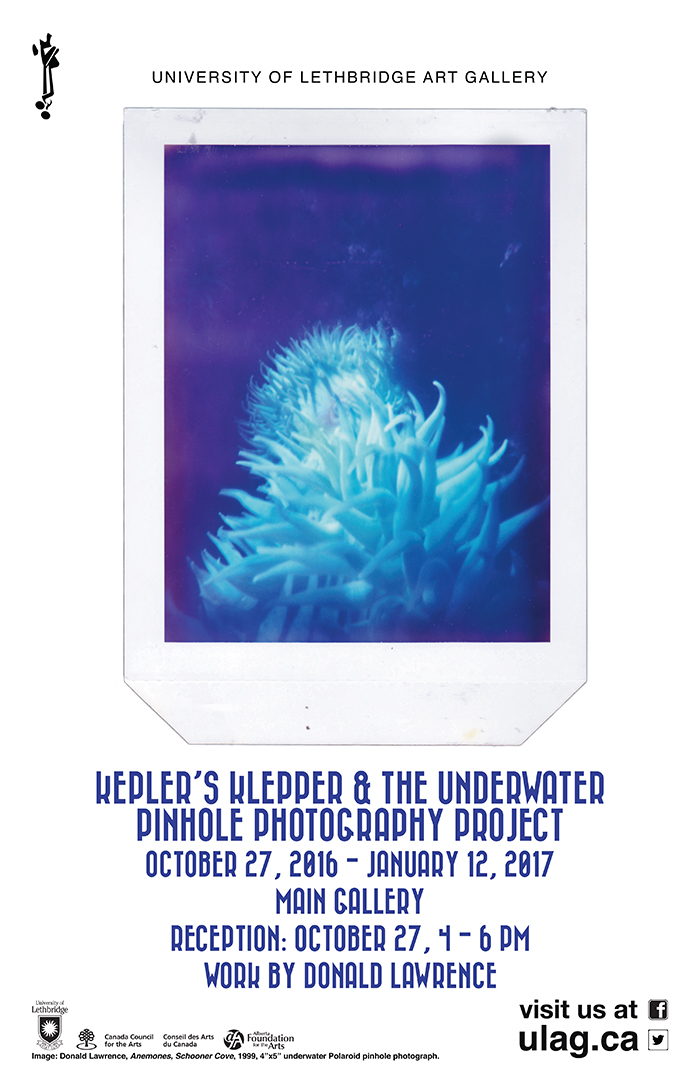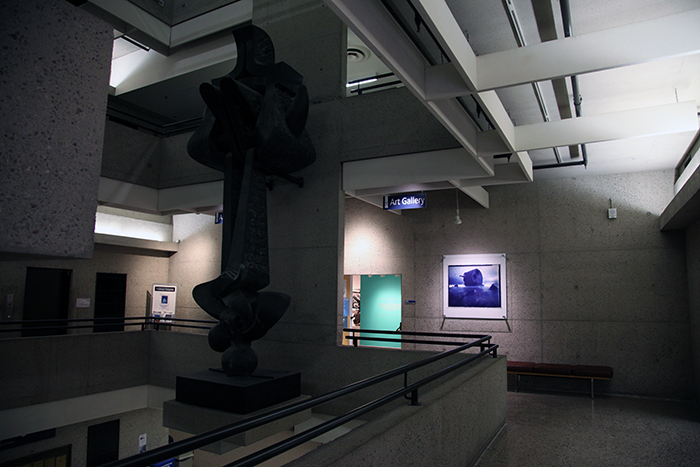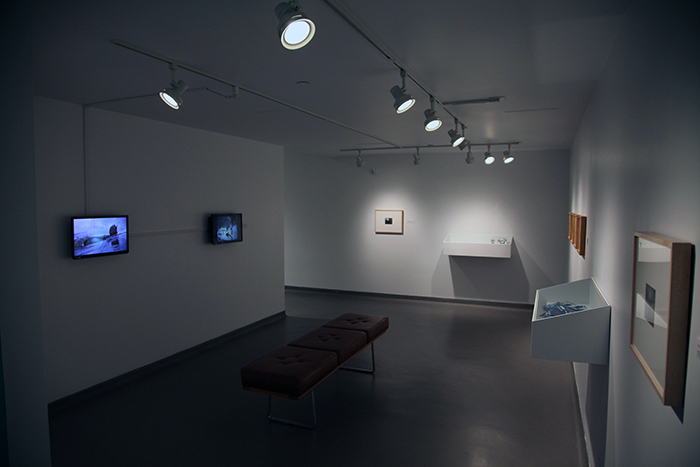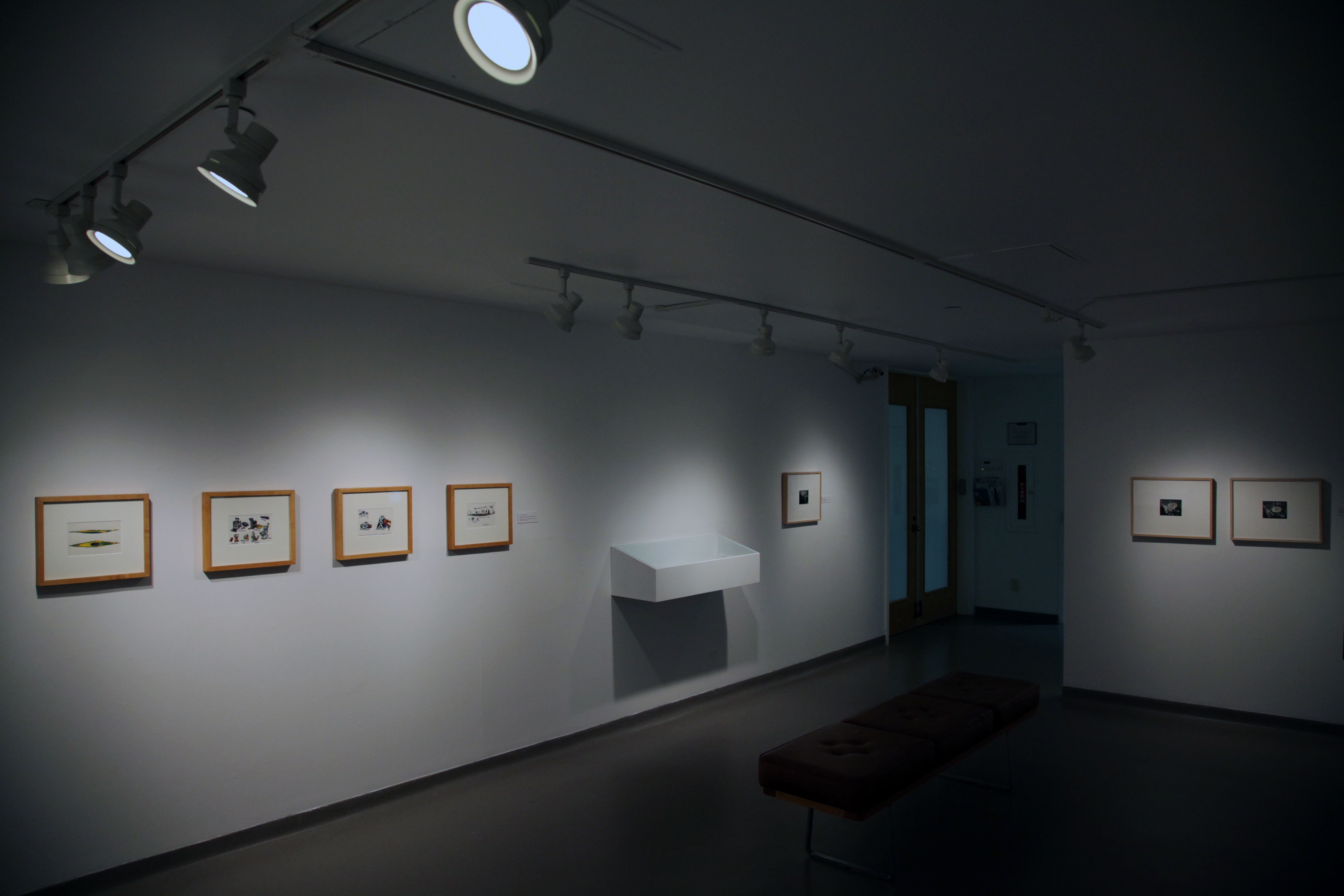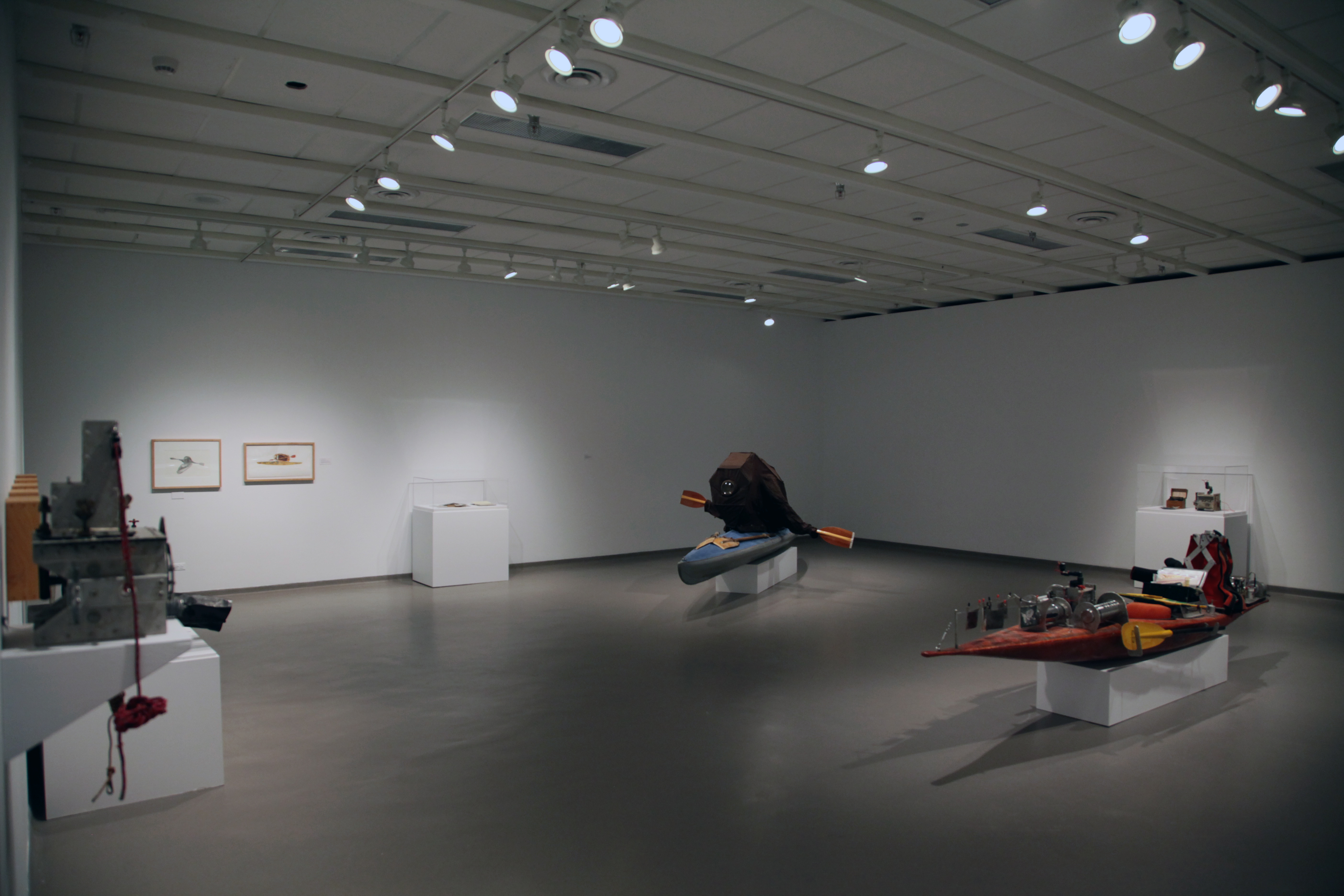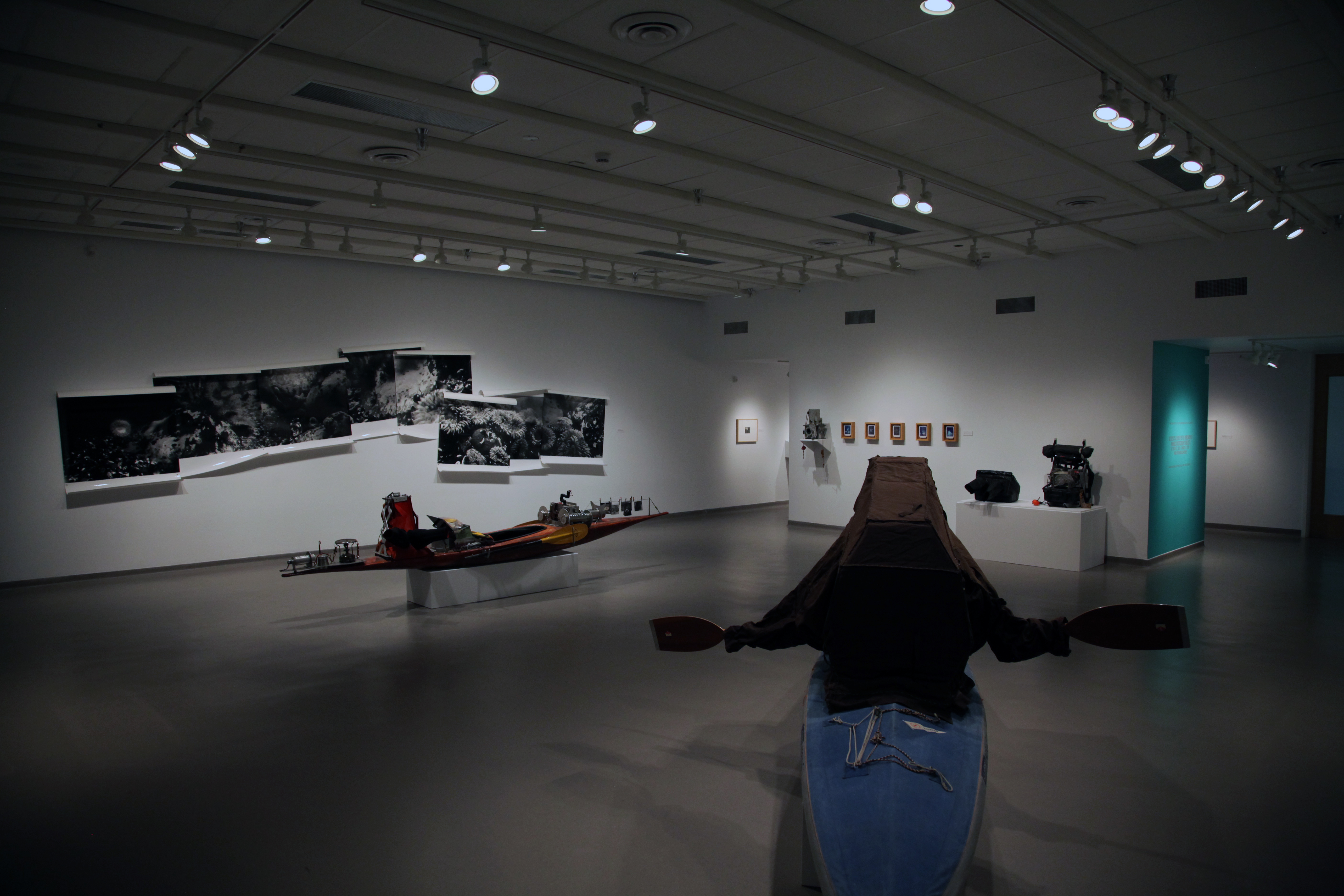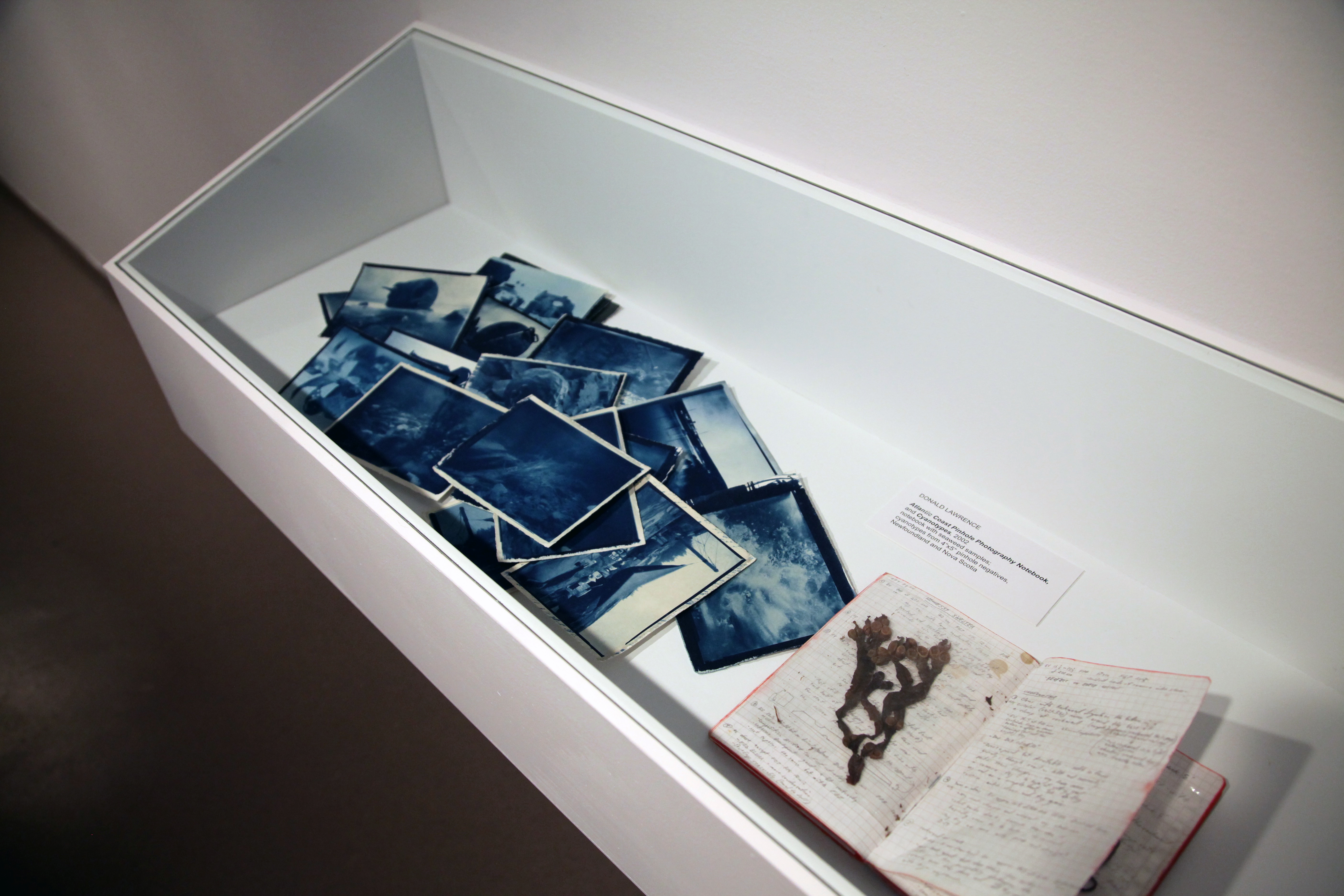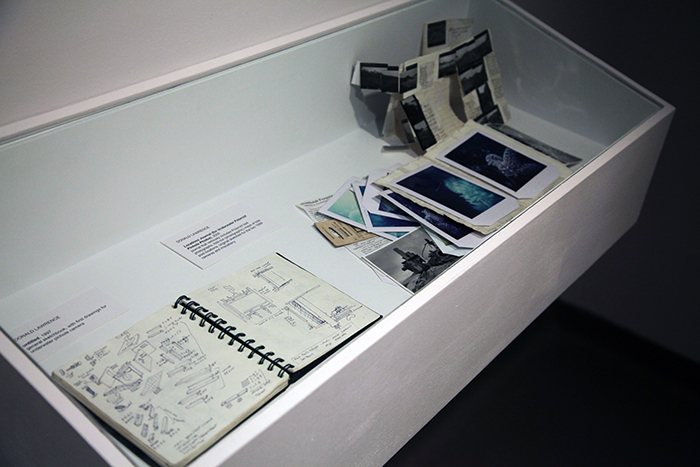Main Gallery
Kepler’s Klepper and The Underwater Pinhole Photography Project
October 27, 2016 – January 12, 2017
Artist: Donald Lawrence
Curated by Josephine Mills
Curatorial Statement
For physicists, photographers and avid sea kayakers, each of the references in the title of this exhibition are immediately apparent. The 17th Century German mathematician and astronomer Johannes Kepler played a key role in the scientific revolution of his era and contributed to the theories that connected the camera obscura with human perception. Johann Klepper designed a folding kayak in 1907 that has extraordinary seaworthiness and Klepper kayaks have been used for solo crossings of the Atlantic; Lawrence has taken a Klepper to such places as Scotland’s Outer Hebrides, Maine’s eastern coast, Tasmania and various locations on the coast of British Columbia. The combination of the two gives a strong sense of who artist Donald Lawrence is and the ideas that he combines in the works in this exhibition. Returning to the spirit of the Renaissance when art and science were intertwined, Lawrence playfully explores complex scientific ideas through the use of low-tech and “pre-photographic” devices. These include underwater pinhole cameras he constructed in order to observe the ocean environments of BC and, later, Canada’s Atlantic provinces.
The underwater cameras are fabulous objects in themselves, particularly once encrusted in barnacles, and even more interesting alongside Lawrence’s designs for them and the resulting photographic prints of sea anemones and other coastal marine life. Adding to this cabinet of wonders, the exhibition includes two kayaks that Lawrence has modified: a folding Klepper converted to a waterborne camera obscura and a slalom whitewater boat reconfigured as a floating darkroom that teeters between function and the absurd. Technically, both kayaks do work as designed, but the level of skill needed to paddle them is beyond most of us. The Kayak/Darkroom includes such whimsical additions as an array of repurposed thermoses (Lawrence is a renowned coffee addict and is never without 2 or 3 thermoses) alongside the various technical apparatuses.
For the past several years, Lawrence has been busy leading a major research team, The Camera Obscura Project, that has received extensive funding from the Social Sciences and Humanities Research Council of Canada. Part of the results of that program of research were exhibited in the University of Lethbridge Art Gallery immediately prior to Kepler’s Klepper and The Underwater Pinhole Photography Project and also resulted in Lawrence converting a circa 1927 grain bin into a walk-in pavilion-style camera obscura at the University of Lethbridge Coutts Centre for Western Canadian Heritage. This exhibition is the first solo exhibition that Lawrence has had in several years and it presents his extensive knowledge of the history of photography and image-making technology, combined with his wilderness experience and understanding of ecology, to provide insight into current discussions about the environment as well as the revival of interest in D.I.Y. technology and non-digital art making.
– Josephine Mills, Director/Curator
Artist Bio
Donald Lawrence teaches Visual Arts at Thompson Rivers University in Kamloops, BC. Stemming from such gallery and landscape-based projects as The Beach (1985), Romantic Commodities (1992) and The Sled (1995) Lawrence’s artistic practice explores the meeting place of urban and wilderness culture, often drawing upon his particular interest in sea kayaking. He has travelled with folding kayaks to Alaska’s Kodiak Island; Maine; Scotland’s Outer Hebrides, and, most recently, Tasmania. There, Lawrence converted one of his kayaks into a floating camera obscura and documented its journeys for Tasmania’s 2011 biannual festival Ten Days on the Island. Together with One Eye Folly (2008) and his ongoing Underwater Pinhole Photography Project such works relate Lawrence’s interests in sea kayaking and the ocean environment to a long-standing fascination with such early and pre-photographic optical apparatuses as pinhole cameras and cameras obscura (darkened spaces in which an often dream-like image of the surrounding landscape is cast inside by way of a lens or small opening). His teaching is across a wide range of media and mixes studio/exhibition practice with other areas of academic inquiry as well as encouraging the creation of work in wilderness settings and in the pseudo-wilderness settings that are found around the edges of such urban centres as Kamloops. In addition to his artistic and teaching practices Lawrence engages in a range of publication and conference activities and he has been the recipient of numerous research grants.
